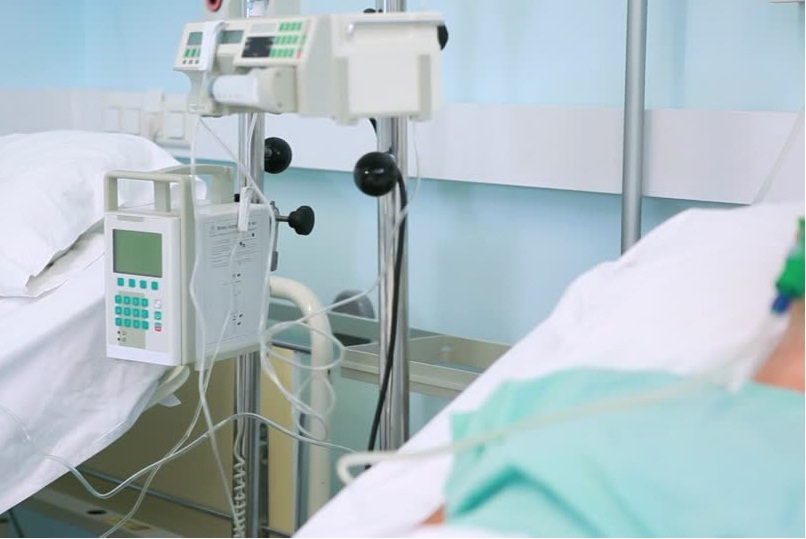Indicadores de funcionamiento en una unidad de cuidados intensivos
Palabras clave:
Gestión en salud, Recursos en salud, Salud pública.Resumen
Introducción: la Constitución de la República de Cuba, en su artículo 50 expresa: “… Todos tienen derecho a que se atienda y proteja su salud”. Es en este contexto en que las actividades de gestión de la calidad, su medición y mejoría deben considerarse como una de las líneas estratégicas más importantes a desarrollar en los centros hospitalarios.
Objetivo: evaluar la gestión y productividad del recurso cama mediante indicadores hospitalarios.
Método: se realizó un estudio observacional, descriptivo, longitudinal y retrospectivo del comportamiento de indicadores hospitalarios en la unidad de cuidados intensivos 2 desde 2006 a 2015.
Resultados: la mediana del índice ocupacional fue de 91,15 %, lo que demuestra eficiencia, y el intervalo de sustitución en los últimos dos años se presentó por debajo de 0.5, lo que clasifica como cama caliente. El índice de rotación fue de 38,8 como promedio y 8,4 el de estadía.
Conclusiones: los indicadores analizados son una herramienta fundamental para mejorar la calidad en la atención en salud pública, considerando la utilización eficaz y eficiente del recurso cama.
Descargas
Citas
1. Constitución de la República de Cuba. Cuba: Editora política; 2010.p. 61-2.
2. Indicadores de calidad para hospitales del sistema nacional de salud [Internet]. España: Sociedad española de calidad asistencial; 2012 [citado 14 Ene 2016]. Disponible en: http://www.calidadasistencial.es/images/gestion/biblioteca/335.pdf
3. Cuba, Ministerio de Salud Pública. Objetivos de trabajo y Criterios de medidas. 2016. La Habana: Ministerio de Salud pública; 2015.
4. Morera Salas M. Diagrama de Barber y Johnson para el análisis de la gestión de la cama hospitalaria en Costa Rica. Rev Costarric Salud pública. [Internet]. 2013 [citado 12 Feb 2016]; 22(1): [Aprox. 6p.]. Disponible en: http://www.scielo.sa.cr/pdf/rcsp/v22n1/art08v22n1.pdf
5. Jimenez Paneque RE. Indicadores de calidad y eficiencia de los servicios hospitalarios: una mirada actual. Rev Cubana Salud Pública [Internet]. 2004 [citado 5 Mar 2012]; 30(1). Disponible en: http://scielo.sld.cu/scielo.php?pid=S0864-34662004000100004&script=sci_arttext&tlng=pt
6. Ceballos Acevedo T, Velásquez Restrepo PA, Jaén Posada JS. Duración de la estancia hospitalaria. Metodologías para su intervención. Rev Gerenc Polit Salud [Internet]. 2014 [citado 16 Ene 2016]; 13(27): [Aprox. 20p.]. Disponible en: http://revistas.javeriana.edu.co/index.php/gerepolsal/article/view/11972
7. Subdirección general de información sanitaria e innovación. Estadísticas de centros de atención especializada, 2011 [Internet]. Madrid: Ministerio de sanidad, servicios sociales e igualdad; 2013 [citado 12 Feb 2016]. Disponible en: http://www.msssi.gob.es/estadEstudios/estadisticas/NotasTecnicas/Notas_tecnicasSIAE.1.pdf
8. León Carvajal PA, Rocha Ramirez PE. Determinación del grado predictivo en mortalidad y estancia hospitalaria prolongada mediante la utilización de la evaluación de los signos vitales aplicando el modified early warning score (mews) en pacientes que ingresan desde el servicio de emergencias al hospital provincial de Riobamba, 2012-2014 [Internet]. Ecuador: Hospital provincial de Riobamba; 2014. [Citado 12 Feb 2016]. Disponible en: http://www.dspace.uce.edu.ec/bitstream/25000/4613/1/T-UCE-0006-87.pdf
9. López Veranes FN, Valenzuela Rodríguez CR, Rodríguez Chirino MW, Cosme Casulo J, Ricardo Cobas MC. Efecto económico del incremento de la Estadía hospitalaria promedio. MEDISAN [Internet]. 2011 nov [citado 12 feb 2016]; 15(11). Disponible en: http://scielo.sld.cu/scielo.php?pid=S1029-30192011001100006&script=sci_arttext
10. Mesa Cabrera M, Blanco Aspiazu MA. Costo hospitalario del Ictus isquémico agudo. Rev Cubana Med Mil [Internet]. 2011 [citado 18 Ene 2016]; 40(1). Disponible en:http://scielo.sld.cu/scielo.php?pid=S0138-65572011000100004&script=sci_arttext.
11. Tamargo T, Jiménez R, Gutiérrez A, Mora I. Dos procedimientos de estudio por riesgo para la estadía hospitalaria como indicador de desempeño. Revista Cubana de Salud Pública [Internet]. 2012 [citado 12 feb 2016]; 38(1): [Aprox. 15p.]. Disponible en: http://scielo.sld.cu/scielo.php?script=sci_arttext&pid=S0864-34662012000100004
12. Cabo Salvador J. Casos prácticos de construcción de indicadores ajustados de actividad hospitalaria [Internet]. Madrid: Escuela nacional de sanidad; 2013 [citado 15 Feb 2016]. Disponible en: http://e-spacio.uned.es/fez/eserv/bibliuned:ENS-1000/Documento-ENS-1000.pdf

Publicado
Cómo citar
Número
Sección
Licencia
Aquellos autores/as que tengan publicaciones con esta revista, aceptan los términos siguientes:- Los autores/as conservarán sus derechos de autor y garantizarán a la revista el derecho de primera publicación de su obra, el cuál estará simultáneamente sujeto a la Licencia de reconocimiento de Creative Commons que permite a terceros compartir la obra siempre que se indique su autor y su primera publicación esta revista.
- Los autores/as podrán adoptar otros acuerdos de licencia no exclusiva de distribución de la versión de la obra publicada (p. ej.: depositarla en un archivo telemático institucional o publicarla en un volumen monográfico) siempre que se indique la publicación inicial en esta revista.
- Se permite y recomienda a los autores/as difundir su obra a través de Internet (p. ej.: en archivos telemáticos institucionales o en su página web) antes y durante el proceso de envío, lo cual puede producir intercambios interesantes y aumentar las citas de la obra publicada. (Véase El efecto del acceso abierto).


